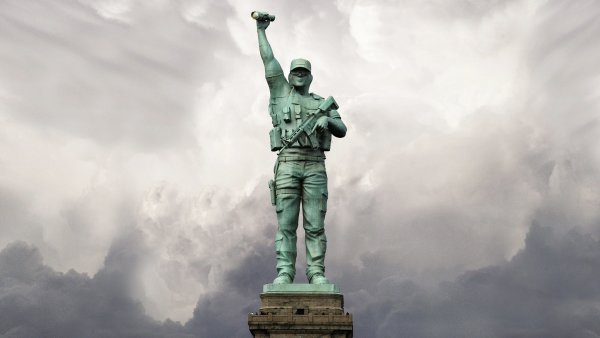THE ATLANTIC: Settling into a sense of safety is hard when your life’s catalog of memories teaches you the opposite lesson. Imagine: You fled from a government militia intent on murdering you; swam across a river with the uncertain hope of sanctuary on the far bank; had the dawning realization that you could never return to your village, because it had been torched; and heard pervasive rumors of former neighbors being raped and enslaved. Imagine that, following all this, you then found yourself in New York City, with travel documents that were unreliable at best.
This is the shared narrative of thousands of emigrants from the West African nation of Mauritania. The country is ruled by Arabs, but these refugees were members of a black subpopulation that speaks its own languages. In 1989, in a fit of nationalism, the Mauritanian government came to consider these differences capital offenses. It arrested, tortured, and violently expelled many black citizens. The country forcibly displaced more than 70,000 of them and rescinded their citizenship. Those who remained behind fared no better. Approximately 43,000 black Mauritanians are now enslaved—by percentage, one of the largest enslaved populations in the world.
After years of rootless wandering—through makeshift camps, through the villages and cities of Senegal—some of the Mauritanian emigrants slowly began arriving in the United States in the late 1990s. They were not yet adept in English, and were unworldly in almost every respect. But serendipity—and the prospect of jobs—soon transplanted their community of roughly 3,000 to Columbus, Ohio, where they clustered mostly in neighborhoods near a long boulevard that bore a fateful name: Refugee Road. It commemorated a moment at the start of the 19th century, when Ohio had extended its arms to accept another influx of strangers, providing tracts of land to Canadians who had expressed sympathy for the American Revolution.
Refugee Road wasn’t paved with gold, but in the early years of this century, it fulfilled the promise of its name. The Mauritanians converted an old grocery store into a cavernous, blue-carpeted mosque. They opened restaurants that served familiar fish and rice dishes, and stores that sold CDs and sodas imported from across Africa.
Over time, as the new arrivals gave birth to American citizens and became fans of the Ohio State Buckeyes and the Cleveland Cavaliers, they mentally buried the fact that their presence in America had never been fully sanctioned. When they had arrived in New York, many of them had paid an English-speaking compatriot to fill out their application for asylum. But instead of recording their individual stories in specific detail, the man simply cut and pasted together generic narratives. (It is not uncommon for new arrivals to the United States, desperate and naive, to fall prey to such scams.) A year or two after the refugees arrived in the country, judges reviewed their cases and, noticing the suspicious repetitions, accused a number of them of fraud and ordered them deported.
But those deportation orders never amounted to more than paper pronouncements. Where would Immigration and Customs Enforcement even send them? The Mauritanian government had erased the refugees from its databases and refused to issue them travel documents. It had no interest in taking back the villagers it had so violently removed. So ice let their cases slide. They were required to regularly report to the agency’s local office and to maintain a record of letter-perfect compliance with the law. But as the years passed, the threat of deportation seemed ever less ominous.
Then came the election of Donald Trump. MORE

